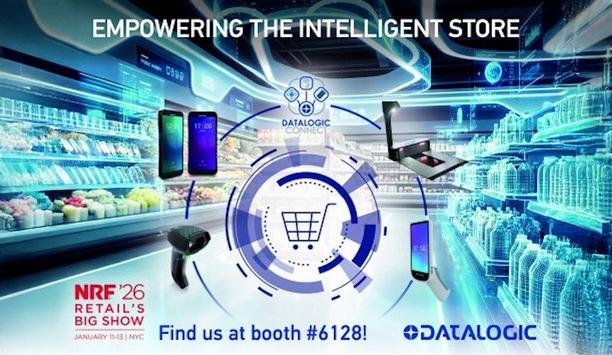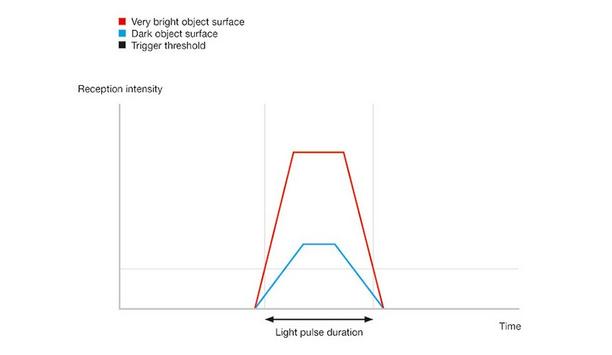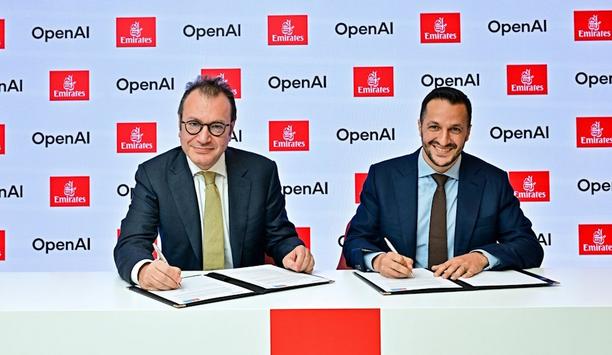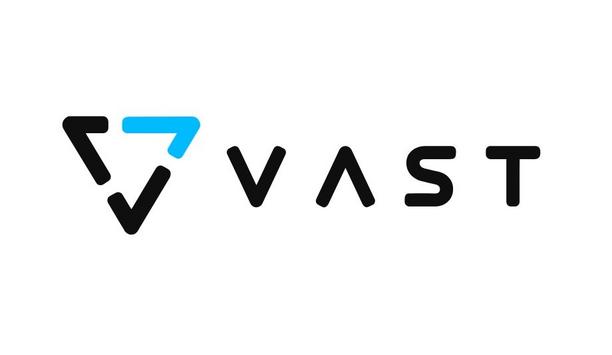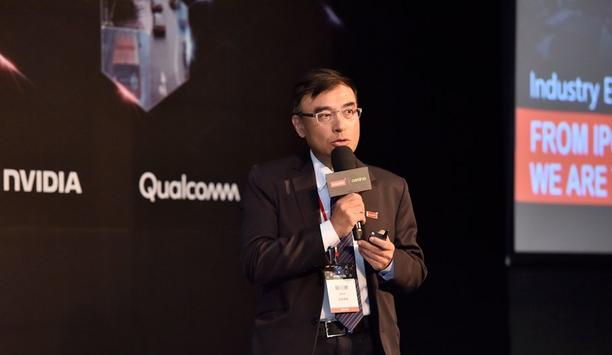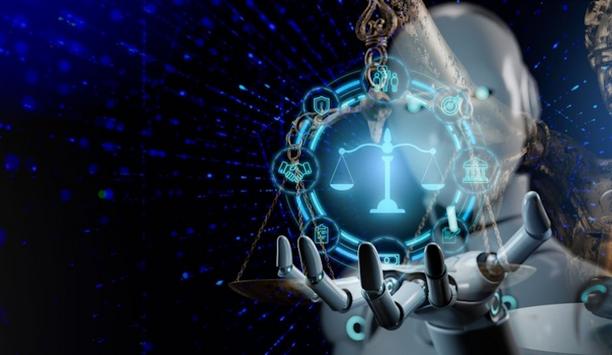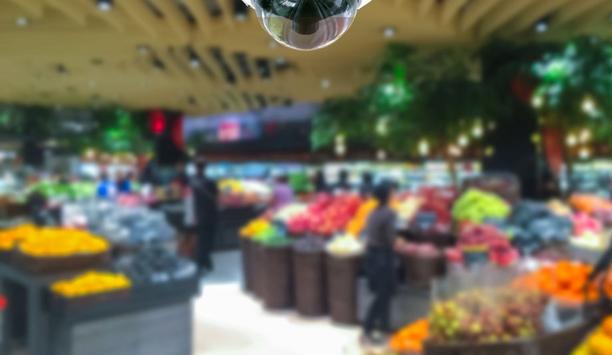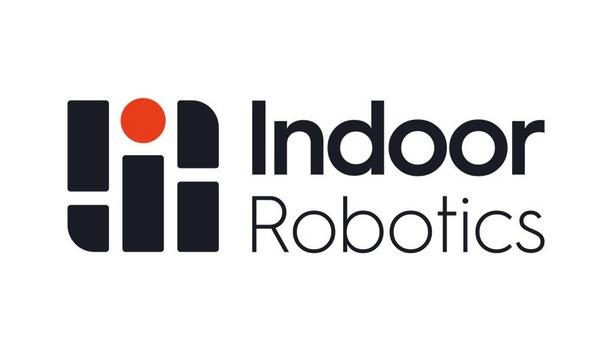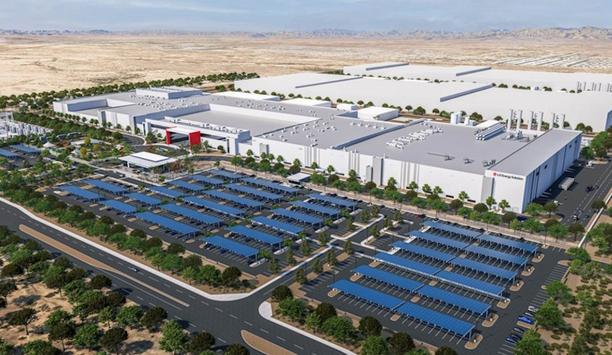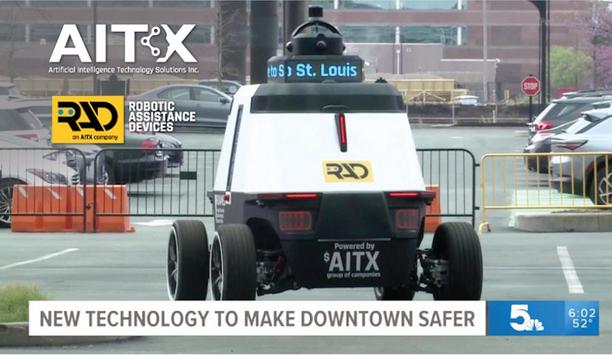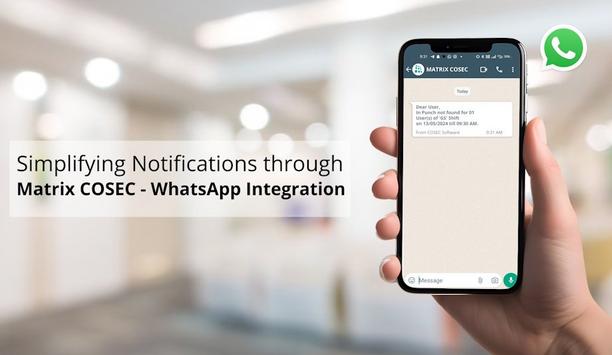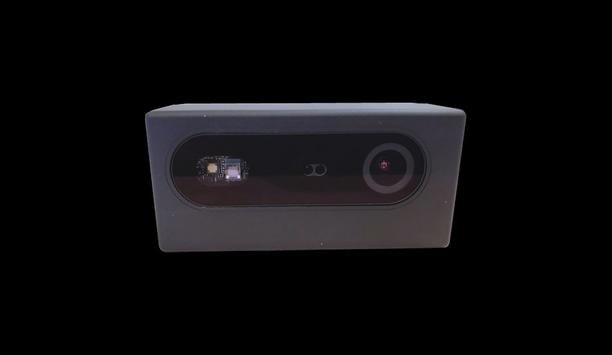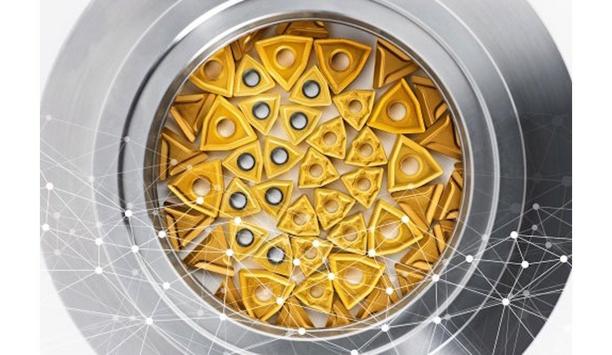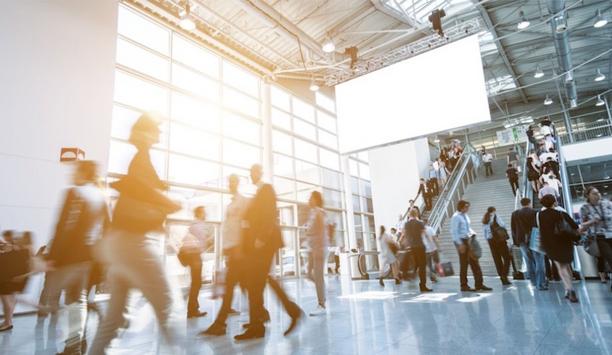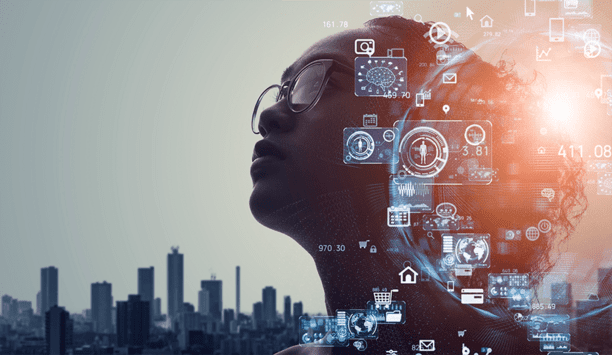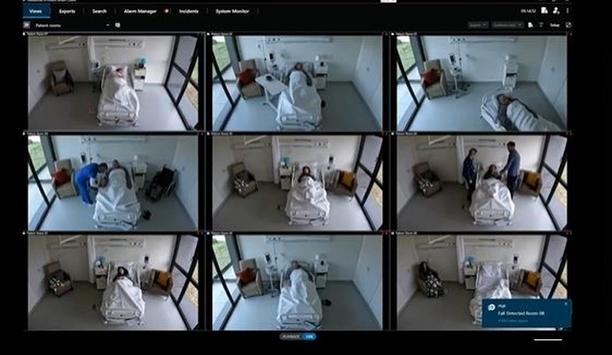Machine Learning
Datalogic, a pioneer in automatic data capture and process automation, will demonstrate how its integrated portfolio is empowering the intelligent store at NRF 2026, thanks to AI-driven integration. Visitors to Booth 6128 will discover how advanced scanning, mobile computing, RFID, and IoT solutions are driving measurable outcomes for retailers: better customer loyalty, more revenue, fewer errors, higher labor efficiency, accelerated in-store productivity, and the creation of seamless customer...
Leuze uses artificial intelligence (AI) to significantly improve the measurement accuracy of optical distance sensors for challenging industrial applications. This innovation improves measurement accuracy without the need for additional computing resources during operation. The solution is based on a neural network. Object surfaces as challenges Optical distance sensors with time-of-flight technology (TOF) offer practical benefits. The sensors enable fast, contactless measurement of large dis...
Emirates and OpenAI have entered into a strategic collaboration to advance AI adoption and innovation across the airline. The collaboration will entail enterprise-wide deployment of ChatGPT Enterprise, supported by tailored AI literacy programs, technical exploration, and executive strategic alignment designed to embed AI capabilities across the organization. Enormous potential for AI technology Ali Serdar Yakut, Executive Vice President IT said: “We see enormous potential for AI techno...
VAST Data, the AI Operating System company, announced at Microsoft Ignite a collaboration with Microsoft to power the next wave of agentic AI. Available soon to Azure customers, the VAST AI OS provides a simple way to deploy high-performance, scalable AI infrastructure in the cloud. Enterprises will be able to access VAST’s complete suite of data services in Azure, including unified storage, data cataloging, and database capabilities to support complex AI workflows. This integration...
In today’s fast-paced digital landscape, enterprises need more than just storage, they need a platform that drives innovation, scales effortlessly, and adapts to their most demanding workloads. Dell PowerScale for Microsoft Azure is purpose-built to meet these needs. Co-developed with Microsoft, this enterprise-class file storage solution delivers high performance, robust security, and seamless integration, empowering organizations to achieve their next breakthrough. From accelerating AI...
Innodisk Group, a global pioneer in Edge AI solutions, announced its new Edge AI strategy and brand positioning, marking its evolution from data-centric innovation to AI-driven integration. Backed by two decades of industrial expertise, Innodisk now positions itself as the “Keystone” that bridges global AI ecosystems with real-world deployments. By integrating AI technologies and infrastructures from Intel, NVIDIA, Qualcomm, and Axelera AI, Innodisk transforms advanced architectures...
News
Cyware, the pioneer in AI-powered threat intelligence management, secure threat sharing and collaboration, as well as hyper-orchestration and security automation, announced the launch of a new Cyware Quarterback AI solution delivering an AI Fabric to uniquely address security use cases. Cyware Quarterback AI was initially launched as a Co-pilot chat assistant in March 2024. Since that first release the AI market has evolved significantly and Cyware’s AI strategy and innovation has evolved as well. Various AI methods In July of this year, Cyware MCP Server was released. Now, Cyware Quarterback AI receives a major upgrade, described as an AI Fabric that weaves together a set of Generative, Agentic and In-Product AI capabilities designed to accelerate threat intelligence and security operations workflows. Built to augment security workflows, these capabilities apply various AI methods to drive unified threat intelligence, accelerating threat intel operationalization, simplifying security automation, and enhancing analyst productivity and efficiency. AI Fabric approach “Paramount to Cyware’s direction is our customers’ success, and we are excited to be able to ease the practitioner’s day-to-day operations and accelerate their workflows with an AI Fabric approach,” said Sachin Jade, CPO of Cyware. He adds, “Our latest innovations in Cyware Quarterback AI tackle complex playbook creation, manual threat data collection, disconnected threat context, and delayed threat detection and response with the best AI methods available.” Largest threat intelligence and security operations teams As AI continues to reshape cybersecurity, its adoption brings both excitement and hesitation. In working with some of the largest threat intelligence and security operations teams, Cyware has identified where AI delivers tangible value and through its AI Fabric has embedded AI in workflows driving practical outcomes. “The advancements in AI this year have made it clear that agentic AI and its real-world application are the future of cybersecurity. We will continue to invest in that direction so our customers can respond faster, act smarter, and stay ahead of emerging threats,” said Akshat Jain, Co-Founder and CTO of Cyware. Cyware’s AI Fabric capabilities The AI Fabric approach evolves Cyware’s unified threat intelligence management by embedding AI into security products and workflows. Unlike many AI add-ons that sit outside core operations, this integrated design brings intelligence to every stage of the threat intelligence lifecycle, from ingestion to action, helping analysts move faster and security teams scale more effectively. Key Cyware Quarterback AI features include: Playbook Builder Agent: AI agent that simplifies playbook creation for analysts through an intuitive, LLM-assisted interface that generates workflows from natural language descriptions. Custom Code Generator: AI agent that automatically generates custom code blocks for playbooks from natural language prompts, eliminating the need for advanced coding expertise. Playbook Runlog Debugger: AI agent that assists in debugging failed playbook run logs by identifying root causes and providing step-by-step remediation guidance, simplifying and accelerating troubleshooting by analysts. Threat Summarization: Generates instant summaries of threat intelligence reports and related objects (e.g., IOCs, malware), helping analysts cut through lengthy descriptions and avoid alert fatigue. Advanced Threat Intel Crawler (Browser Plugin): Transforms threat intelligence from websites into structured, enriched data in real time, saving analysts time from manual scraping of threat data. The collective capabilities expand Cyware Quarterback AI’s footprint driving AI-powered security operations where automation and intelligence work hand-in-hand to support security teams at every stage.
AuditBoard, the pioneering AI-powered global platform for connected risk, announced the findings of its 2026 Focus on the Future report, revealing the internal audit profession is navigating an environment of hyper volatility defined by accelerating, interconnected risks. The survey of 213 global internal audit pioneers shows the profession is being challenged by three converging forces: persistently tight resources, the rise of AI, and a demand for role redefinition. Overcome resource limitations The report highlights that internal auditors must overcome resource limitations by leveraging AI as a capacity multiplier while simultaneously upskilling their teams to provide greater value. This is the only way the function can thrive in this next-generation environment. Key findings: converging pressures on the internal audit profession The survey identifies a dangerous gap between aspiration and capability, driven by these core challenges: AI readiness lags execution: Only 39 per cent of internal audit pioneers say AI will significantly transform the profession within five years. At the same time, readiness to provide assurance over AI lags behind adoption. Only 28 percent of pioneers express confidence in their teams’ ability to effectively audit AI risks, and 63 percent of organizations have not yet defined a formal risk appetite or governance framework for AI use, leaving internal auditors with little structure for oversight. The resource paradox: Internal audit continues to face expanding responsibilities with stagnant or shrinking budgets. 43 per cent of respondents reported no change in their 2025 budgets compared to 2024, and 18 per cent reported reductions. Staffing levels followed a similar pattern, with 57 per cent maintaining flat full-time headcounts despite expanding mandates. The identity crisis persists: Over half of the respondents aspire to be recognized as trusted advisors, yet fewer than a quarter currently feel their departments are perceived in this way. This is a critical vulnerability, as functions viewed purely as compliance enforcers risk being rendered irrelevant by automation. Keeping a competitive edge While AI can enhance efficiency, it cannot replicate the unique qualities that distinguish outstanding auditors. The survey identified the top skills differentiating auditors in 2026 and beyond: Professional skepticism and inquisitiveness Relationship-building and communication Ethical judgment Critical thinking Risk for the future of the profession Richard Chambers, Senior Advisor, Risk and Audit, AuditBoard, said: "Internal audit stands at a tipping point. The pressures outlined in the report create unprecedented risk for the future of the profession." He adds, "To thrive amid hyper volatility, internal auditors should utilize AI to automate routine tasks, freeing up teams to focus on more specialized tasks and move beyond merely reporting what is happening to become the foresight-driven strategic partners the business needs."
Chronosphere, the observability platform built for control, announced the launch of AI-guided troubleshooting capabilities, a major advancement that redefines how engineering teams investigate and resolve production incidents. The new set of capabilities combines AI-driven insights with deep environmental context via a temporal knowledge graph. With this context, Chronosphere delivers highly accurate root-cause insights that enable engineers to resolve issues faster and with greater confidence. Advancements in software development Research from MIT and the University of Pennsylvania found that generative AI spurred a 13.5 percent increase in weekly code commits, signifying a surge in code velocity and change volume. Despite these advancements in software development, troubleshooting remains primarily manual and relies heavily on intuition, resulting in slower mean time to resolution (MTTR) and greater on-call stress. Chronosphere's AI-guided troubleshooting capabilities Chronosphere's AI-guided troubleshooting capabilities close this gap by combining AI reasoning with a temporal knowledge graph – a living, queryable map of an organization's services, infrastructure, and their relationships. It accounts for system changes and even human input. Unlike observability tools that run on proprietary or standard data inputs, it also integrates custom application telemetry, providing the deep context needed for effective root-cause analysis. Chronosphere's advanced analytics With this context in place, the system then applies Chronosphere's advanced analytics to surface the most meaningful next steps in an investigation. At each stage, it explains what's been analyzed or ruled out, allowing engineers to stay in control while AI accelerates every phase of the troubleshooting process. As engineers zero in on a root cause, investigations are fed into the temporal knowledge graph so future suggestions get smarter. Data foundation and analytical depth "For AI to be effective in observability, it needs more than pattern recognition and summarization," said Martin Mao, CEO and co-founder of Chronosphere. "Chronosphere has spent years building the data foundation and analytical depth needed for AI to actually help engineers. With our temporal knowledge graph and advanced analytics capabilities, we're giving AI the understanding it needs to make observability truly intelligent – and giving engineers the confidence to trust its guidance." Four core capabilities Chronosphere's AI-guided troubleshooting introduces four core capabilities: Suggestions: Proactive, plain-language insights that guide investigations toward likely causes – backed by data, not guesswork. Temporal knowledge graph: A continuously updated map of services, dependencies, and custom telemetry, capturing full system context. Investigation notebooks: Persistent workspaces that document every step, piece of evidence, and conclusion, turning investigations into reusable institutional knowledge. Natural language assistance: Engineers can now build queries and dashboards using natural language, accelerating data exploration. Availability of the MCP Server In addition to AI-guided troubleshooting, Chronosphere announced the general availability of its Model Context Protocol (MCP) Server, enabling engineers and developers to integrate Chronosphere directly into internal AI workflows. This level of deeper integration empowers teams to leverage large language models (LLMs) and securely query observability data through familiar tools such as Codex, PromptIDE, or other AI-enabled IDEs. AI-guided troubleshooting, including suggestions and investigation notebooks, is in limited availability now, with full general availability planned for 2026. MCP integration is available now for all Chronosphere customers.
VAST Data, the AI Operating System company, announced it has signed a commercial agreement valued at $1.17 billion with CoreWeave, the essential cloud for AI. The expanded partnership reinforces CoreWeave’s long-standing commitment to the VAST AI OS as its primary data foundation, solidifying VAST as a key component of CoreWeave’s AI cloud. CoreWeave’s infrastructure Powered by the VAST AI OS, CoreWeave’s infrastructure delivers instant access to massive datasets, breakthrough performance, and cloud-scale economics for both training and inference workloads. Built on an infinitely scalable system architecture, CoreWeave can deploy VAST in any data center for any of its customers, without ever having to worry about platform reliability or scale. These are some of the most intensive and demanding computing environments in the world, and together VAST and CoreWeave are making sure their customers are always computing. Next generation of AI infrastructure As part of this expansion, CoreWeave is working with VAST to deliver sophisticated data services to their shared customers that extend across the full stack. This optimizes data pipelines and unlocks the advanced design capabilities that model builders require. Together, the companies are building the next generation of AI infrastructure, enabling customers to move faster, scale seamlessly, and operate with unmatched efficiency. “At VAST, we are building the data foundation for the most ambitious AI initiatives in the world,” said Renen Hallak, Founder and CEO of VAST Data. “Our deep integration with CoreWeave is the result of a long-term commitment to working side by side at both the business and technical levels. By aligning our roadmaps, we are delivering an AI platform that organizations cannot find anywhere else in the market.” CoreWeave’s GPU-accelerated infrastructure “The VAST AI Operating System underpins key aspects of how we design and deliver our AI cloud,” said Brian Venturo, co-founder and Chief Strategy Officer of CoreWeave. “This partnership enables us to deliver AI infrastructure that is the most performant, scalable, and cost-efficient in the market, while reinforcing the trust and reliability of a data platform that our customers depend on for their most demanding workloads.” The agreement advances a shared mission to redefine the data and compute architecture for AI. By combining CoreWeave’s GPU-accelerated infrastructure with the VAST AI Operating System, the companies are building a new class of intelligent data architecture designed to support continuous training, real-time inference, and large-scale data processing for mission-critical industries.
Colt Technology Services (Colt), the global digital infrastructure company, released data from its latest research entitled ‘Concern to Confidence: How Telecoms Businesses Can Embrace AI Without Leaving People Behind’, which explores telecoms employee sentiment around AI in the workplace. The Colt report – built on in-depth interviews and a survey which questioned 1005 workers from a variety of roles in telecoms firms from Finland, France, Germany, India, Italy, Japan, Spain, the UK and the USA – highlights the importance of a ‘people-first’ AI strategy and outlines the risks presented if employees are left behind, with one person interviewed stating, “There is an assumption everyone is ready to adapt, but a lot of people are just overwhelmed and staying silent”. Another interviewee says, “Too often, decisions about AI are being made in rooms where there’s no one thinking about equity,” and another says, “If the data reflects historical bias, and the system learns from that, we are just codifying inequality”. Highlights from the survey Less than one in four (23%) respondents feels very confident in their job security, and this lack of confidence is more prevalent among employees in junior and entry-level positions 55% of employees are concerned around AI replacing their roles and those most concerned are in positions more likely to be occupied by female survey respondents Despite this, most respondents (63%) believe AI will improve progress on gender targets, although care is needed to mitigate bias in AI systems and to consult a diverse set of employees from the outset Data reveals variances in the use of AI tools from country to country - among those whose company has integrated AI in day-to-day operations - with AI built into search and generative AI among the most commonly used Earliest stages of the AI journey Frank Miller, Chief AI and Platforms Officer, Colt Technology Services said, “As our study shows, AI offers employees incredible opportunities to expand their knowledge, streamline daily tasks and focus on what truly matters – and this in turn drives successful business outcomes. But businesses must set in place a people-first approach, built on responsible AI principles, or they risk reinforcing disparity and limiting opportunity for marginalized groups.” He continued, “By bringing employees in from the earliest stages of the AI journey, by maintaining open communication, providing accessible skills training and fostering a culture of continuous learning, the telecoms industry can build a diverse, talented and empowered workforce ready to face the future with confidence and excitement”. Key findings from the report Concerns continue around role displacement and AI reinforcing disparity 55% say they are concerned about AI displacing their role or part of their role in the future. Employees in marketing (60%), finance (60%), customer service (59%) and admin (58%) roles are more likely to be concerned about AI displacing their role – roles predominantly held by female survey respondents, with one person interviewed stating, “If you look at the areas that are being automated first, they tend to be roles often filled by women” and another backing this up with, “We need more diverse people feeding across the company into these models; right now it’s mostly the same demographic building the tools”. The report also highlights a gap in awareness of steps organizations are taking to mitigate the risk AI poses to gender disparities – if they are taking these steps at all. At the same time, respondents note the opportunity to improve progress on gender targets, if businesses can get it right Traditionally, the telecoms industry is not known for its gender parity, but while few respondents currently believe the level of gender diversity is excellent at board level (stated by 20%); senior management level (20%) and across the company (22%), almost two thirds (63%) of respondents say they believe AI will improve progress on any gender targets their company is working on - or plans to work towards. Businesses are providing a variety of tools to equip workers with AI skills To help prepare employees for the future, around one in four businesses (24%) is upskilling employees in their current roles, while just over one in five (21%) is upskilling employees for a different role altogether. Tools offered by businesses to help with upskilling include online courses (offered to 47%); reading materials (41%) and attending conferences (35%). One in three (33%) has access to in-person courses; over one in four (27%) can work towards a certification/formal achievement and one in five has a mentor program in place. Findings reveal a positivity around the impact of AI Overall, there was a positivity around AI with telecoms employees hopeful it would bring benefits to their roles including faster data analysis and improved productivity. Options selected by country were: Speeding up time to complete tasks – the preferred option for telecom workers in India, selected by one in two; in the US, cited by 43% and Japan, selected by 44% Faster analysis of data, selected by 44% of respondents in Germany and 46% in Finland Reduced risk of errors, cited by one in three (33%) respondents in Italy and 29% in Spain Boosting productivity, the most popular option for the UK (41% of respondents) and in France (30%) Integrated AI in day-to-day operations AI built into search was mostly likely to be used on a daily basis, cited by 35% of respondents on average whose company has integrated AI in day-to-day operations, rising to 56% in India, 43% in the UK and 39% in the US. Almost one in four (24%) use generative AI every day, with the highest adoption in India (43% use it daily), 38% in the UK and 28% in the US. Frank continues, “A people-first approach to AI promotes equity and inclusion, making sure AI systems do not unintentionally reinforce bias and helps developers and organizations prioritize safety, fairness and accountability. It builds trust and transparency and, ultimately, it generates deeper employee engagement and a great customer experience”. Colt’s own foundational pillars ‘People and culture’ and ‘Responsible AI’ are two of Colt’s own foundational pillars on which its AI strategy is built. These frameworks include focusing on: AI Literacy: ensuring people building/deploying/using AI systems have sufficient levels of knowledge, training and support for operational activities. Culture and Community: promoting an open-minded, growth mindset culture with a critical approach while using AI’s output, while building inclusive spaces for all to engage on AI's opportunities and risks. Social Sustainability: managing risks to individuals and societal groups from AI’s deployment. Prioritizing principles of fairness, transparency and accountability. Environmental Sustainability: Understanding the true lifecycle impacts of AI and prioritizing efficient design choices across hardware and software. AI for Good: advancing and prioritizing AI use cases which provide positive net benefits for people and the planet.
AuditBoard, the AI-powered global platform for connected risk transforming audit, risk, and compliance, announced the launch of Accelerate, a powerful new AI solution that delivers natural-language workflows, continuous auditing and monitoring, document intelligence, and agentic AI. The launch builds on the strong foundation of AuditBoard’s existing AI innovations, further empowering global risk teams with the world’s first AI-driven connected risk platform. AuditBoard’s new AI functionality “AuditBoard’s AI has already been instrumental in our security risk oversight, and we’re just scratching the surface of its potential,” said Olabode Olaoke, Head of Cybersecurity Risk, Block. “It has fundamentally changed how our teams work, generating faster insights and helping us make a meaningful impact on the business. We’re eager to see how AuditBoard’s new AI functionality will revolutionize our workflows and unlock the next level of efficiency for our team.” Transformational GRC-trained AI With Accelerate, risk teams can deliver proactive insights and become a strategic enabler of the business, compliance teams can move faster and elevate their role as enablers of security, trust, and growth, and internal audit teams can shift from executing manual control checks to analyzing root causes and delivering strategic insights to the CFO and executive leadership. Accelerate consolidates AuditBoard’s newest AI capabilities into a single experience for these teams, including: Audit Agent: Transform audit fieldwork by reducing weeks of work into hours through accelerated control testing and documentation cycles. Leverage AI to select representative, risk-based samples that improve accuracy, consistency, and audit efficiency. And, rapidly annotate large volumes of receipts and supporting documents to streamline testing. Continuous monitoring and continuous auditing: Eliminate manual evidence collection and reviews, and move away from point-in-time assurance with continuous auditing and control testing. Document Intelligence: Turn raw notes into audit-ready artifacts to glean insights and generate stakeholder reports, consolidating progress and insights from multiple audits into clear status summaries. Automatically transform walkthrough notes into detailed narratives and cross-audit summaries that surface key risks, processes, and trends to enhance coverage and insight. Enterprise-grade capabilities of AI "Accelerate is a huge unlock for how our customers run their teams," said Happy Wang, Chief Product and Technology Officer at AuditBoard, adding "GRC teams can leverage the enterprise-grade capabilities of AI Accelerate to automate fieldwork, generate audit-ready outputs, and surface real-time insights — truly becoming strategic partners for their business." Oversight, compliance, and internal standards AuditBoard’s AI is designed for precision and accountability. Capabilities are domain-trained, secure, and auditable, with actions logged and traceable to support oversight, compliance, and internal standards. Practitioners remain in control, applying human judgment while AI accelerates the work.


Expert commentary
In the ever-evolving struggle between cyber offense and defense, attackers have almost always moved first. In the emerging domain of artificial intelligence, this pattern appears to be repeating itself. Yet, global cybersecurity pioneers appear disconcertingly disengaged. Just over half even agree that AI-driven attacks are set to become dramatically more complex and widespread. Equally concerning is the widespread apathy regarding AI’s role in expanding an already sprawling corporate attack surface. This is no small oversight. A recent global Trend Micro study showed that 73 percent of organizations have already suffered cybersecurity incidents due to unknown or unmanaged assets. In an era where digital blind spots are both common and consequential, hesitation is a risk few can afford. Security has to shift from reactive protection to proactive risk exposure management. The opportunity and the risk of AI Threat actors are now using jailbroken versions of legitimate generative AI tools such as ChatGPT The potential for AI to transform enterprise operations is enormous, but so is the risk. The warnings have been loud and clear. As early as the first quarter of 2024, the UK’s National Cyber Security Center (NCSC) stated that AI would “almost certainly increase the volume and heighten the impact of cyber-attacks over the next two years.” Their prediction is proving accurate. Threat actors are now using jailbroken versions of legitimate generative AI tools such as ChatGPT, freely traded as services on the dark web, as well as malicious models like FraudGPT, built on open-source large language models (LLMs). These tools are no longer just about automating tasks; they are turbocharging the entire attack lifecycle. From more convincing phishing emails and precise target selection, to sophisticated malware creation and lateral movement within breached systems, AI is driving a step-change in threat actor capability. Integrating open-source models However, this is only one side of the coin. The other, often overlooked, is AI’s impact on the corporate attack surface. Even well-meaning employees can unintentionally expand organizational risk. The widespread use of AI-as-a-service tools like ChatGPT introduces significant shadow IT concerns, especially when sensitive business information is input without proper oversight. Data processing and storage practices for many of these services remain opaque, raising additional compliance concerns under regulations like the UK GDPR and the EU’s AI Act. For those organizations that choose to build or customize their own LLMs, the risks multiply. Integrating open-source models may expose businesses to vulnerabilities, misconfigurations and flawed dependencies. Each new tool and environment adds to the complexity of an attack surface already strained by remote work setups, sprawling cloud deployments, IoT ecosystems, and accelerating digital transformation programmes. Managing the expanding risk landscape Many have already shared security incidents where a lack of asset visibility was the root cause Many security pioneers do understand what is at stake. Nine in ten agree that effective attack surface management is tied directly to business risk. They cite a long list of potential consequences, disruptions to operations, reputational damage, declining competitiveness, strained supplier relationships, financial losses and reduced staff productivity. Many have already experienced security incidents where a lack of asset visibility was the root cause. Despite this recognition, however, the response remains largely inadequate. Fewer than half of global organizations use dedicated tools to monitor their attack surface proactively. On average, only a quarter of cybersecurity budgets are allocated to managing cyber risk exposure. Third-party risk management is similarly neglected: fewer than half of firms actively monitor their vendors for vulnerabilities. This inertia creates an obvious contradiction. Security pioneers understand the business implications of unmanaged risk, but they are not equipping themselves with the tools or processes to respond. That needs to change—and fast. How AI can help defenders take the lead There is good news: AI is not only a weapon for cybercriminals. It can also be a powerful ally for defenders, particularly in the field of Cyber Risk Exposure Management (CREM). The best tools in this category use AI to continuously scan an organization’s entire digital footprint. They can automatically detect vulnerabilities, spot misconfigurations, identify rogue or shadow assets, and provide prioritized remediation recommendations. CREM platforms apply contextual filtering to reduce false positives and elevate the most urgent threats Intelligent algorithms can also analyze network behavior to identify anomalies that could signal a breach in progress. Unlike traditional tools, which often drown analysts in noise, CREM platforms apply contextual filtering to reduce false positives and elevate the most urgent threats. For overburdened security teams, this enables a far more focused and effective response. However, the keyword here is “continuous.” The nature of today’s IT environments, especially in the cloud, is dynamic and fast-moving. Assets appear and disappear within minutes. Static, point-in-time assessments are no longer sufficient. Yet more than half of organizations still lack continuous scanning processes. This leaves them exposed to risks that might persist undetected for weeks or months. Overcoming barriers to adoption So what is holding organizations back? In many cases, it’s not the technology itself but the internal politics of investment. Security pioneers interested in CREM tools often prioritize real-time alerting, clear dashboards, and seamless integration with their existing environments. All of this is now achievable. The challenge lies in securing board-level support. Many security teams still work in silos, disconnected from the broader business Boards are often cautious when it comes to cybersecurity investment, particularly when immediate ROI is not clear. To gain their trust, security pioneers must learn to speak the language of business risk, not technical threat. They must frame cyber exposure in terms of reputational impact, regulatory liability, operational continuity, and investor confidence. There is also a cultural component. Many security teams still work in silos, disconnected from the broader business. This limits their influence and makes it harder to embed security as a strategic enabler. In the AI era, this divide must be bridged. Cybersecurity must become a board-level concern, and risk exposure must be treated as a fundamental operational issue. Time to act We are at a critical inflection point. The AI revolution is not on the horizon, it is already here. Threat actors are moving rapidly to exploit it, leveraging tools and techniques that were unthinkable just a few years ago. Meanwhile, organizations remain slow to respond. Too few are investing in the tools, processes, and people needed to manage their risk exposure effectively. AI can be used not only to attack but to defend. CREM tools powered by AI offer a powerful way to regain visibility, restore control, and build lasting resilience. They enable proactive rather than reactive security. And they help organizations align their cybersecurity strategy with their broader business objectives. Security teams have to elevate the conversation. They must advocate not just for new tools, but for a new mindset, one that treats cyber risk as an enterprise risk, and one that prioritizes continuous visibility as a prerequisite for resilience.
Artificial Intelligence isn’t just a buzzword anymore. It has become part of our lives, and its uses and applications are growing every other day. Even the public sector, which usually is a late adopter of new technologies, has come onboard this new train. Law enforcement, in particular, has seen the advantages different AI technologies can offer to their work and has started to integrate them into their workflow and daily routines. But there is much more to come. Task automation: AI as a workhorse Due to the increasing importance of media files in police investigations, current police cases have an increasing amount of digital files to be analyzed. Videos from mobile phones, computer files, sound recordings, voice messages from chat applications…the list is almost endless. But, in contrast to other types of digital files, like documents or PDFs, it is not possible to search directly a certain information in a video. It has to be watched by someone. And that takes an inordinate amount of time for a human being, as there can be hundreds of videos in a case. This is one of the areas where artificial intelligence shines. Modern analytics systems are able to find almost any kind of information in media files due to the improvement of artificial vision, object recognition and face biometrics. It is simply a matter of feeding the hundreds or thousands of media files to a AI analyzer, which will work through them and find specific sounds, words, faces, cars, etc. Case of law enforcement On top of that, an analyzer does not tire after long work hours and does not make errors What is more, unlike human officers, these systems can work 24/7 which speeds up investigations considerably, as more evidence is found in less time. On top of that, an analyzer does not tire after long work hours and does not make errors. This is why police work can be helped greatly by AI Analytics, as it frees police officers to do high value work, instead of endlessly watching videos on a computer of listening to audio recordings, in search of evidence. As soon as the system finds what the officer has specified (a face, name, number plate, object, etc.) it sends an alarm to the officers’ phone, so he or she can take a look and decide what to do with that information. Despite AI being touted as a danger to many workplaces, in the case of law enforcement, it is a valuable tool to help police do more, with more accuracy, and in less time, freeing officers from the repetitive and boring work of checking mountains of evidence in search of clues. The AI Analyzer landscape The field of AI analytics is expanding constantly and new types of analysis are being discovered that may be helpful to police or intelligence. The most used analyzers today are probably Automatic License Plate Recognition (ALPR), object and face recognition. But OCR is equally useful not just for reading documents, but also signs and logos that may appear in pictures or videos, to help identify a location. And for audio (as in interception or surveillance recordings) there is speech-to-text (S2T), translation, Speaker ID, audio fingerprinting (AFP) and natural language processing (NLP) which is able to extract sentiment from what is said. All of these have their application in daily police work and can save time in investigations or make them possible in the first place. But looming on the horizon are new possibilities, which we will discuss later and that are even more powerful. So the field of AI Analytics is, by no means, a closed one. Generative AI in law enforcement LLMs will be an important part in all those tasks related to investigate large sets of documents For the past year, the term “Generative AI” has become part of our general vocabulary, although most of the time we just say ChatGTP, Copilot o similar. The large language models (LLM) use Deep Learning and different AI strategies to, amongst other things, analyze and summarize vast amounts of information, in order to generate a short report with the highlights. This can be of use for Law Enforcement in all those cases that have great amounts of documents that may contain evidence. Again, this is a case like the above, where AI helps speed up operations by doing the grunt work much quicker than any person could. The difference is in the Deep Learning part. The model can be tuned to specific needs (like financial crimes, for example) and will get better over time when dealing with specific sets of documents. Thus, LLMs will be an important part in all those tasks related to investigate large sets of documents during a case. What the future holds As with all technology, it is virtually impossible to predict what the future will hold. Because any breakthrough can upend complete sectors, as demonstrated by ChatGPT not that long ago. However, there are several promising AI technologies in the pipeline, some of which are already being tested and perfect around the world: Behaviour analysis: as facial recognition systems get better and better, they are not only able to recognize faces, but also facial expressions. This means that AI systems could be assisting during interrogations, to evaluate the truthfulness of what is being said. Combined with the analysis of small voice inflections, they can be a non-invasive “lie detector”. Robotics: already in use by many police forces around the world, robots are going to be ever so important. Particularly the autonomous kind, which is able to do missions on its own, without a human behind the controls. This, combined with swarm technology, could be an incredible help in disaster areas, where time is of the essence in locating victims. Predictive policing: thanks to pattern analysis, predictive policing, which has been to the test several times already, will be an important part of police work, to figure out where to send units or concentrate surveillance efforts. In short, AI has much more to offer, and we are going to see and incredible evolution of this technology applied to law enforcement, over the next years.
Retailers now often find themself in a precarious situation. Profit margins are being squeezed by widespread shoplifting: The Council on Criminal Justice reports that between the first half of 2023 and the first half of 2024, shoplifting reports increased by 24%. Meanwhile, the strategies used by shops to deal with this situation are alienating consumers and affecting total sales. Andy Jassy, the CEO of Amazon, stated during an earnings call that customers are now purchasing more pharmaceuticals from Amazon in response to other retailers locking their cabinets. Media reports This crisis impacts not only the large chains—more than 7,100 retail stores were closed in the U.S. in 2024, a 69% increase from the previous year—but also small, local businesses, whose profit margins are even narrower. Media reports out of Los Angeles show that small businesses in regions with greater shoplifting rates are more likely to close, and small business owners' job satisfaction and general well-being are negatively impacted by the fear of crime. How to safeguard staff and inventory Unchecked retail theft demoralizes staff and makes the store less attractive to customers This is obviously not a sustainable situation. In addition to lowering revenue, unchecked retail theft demoralizes staff and makes the store less attractive to customers. Unfortunately, making customers wait in line to enter a store or locking up toothpaste and deodorant only makes the customer relationship worse. Retailers need to figure out how to safeguard staff and inventory without alienating their customer base—and they need to figure it out fast. Advanced video security A new tool has come to the forefront of this fight: advanced video security. Of course, video surveillance has been used in stores for many years. However, the technology currently being used to reduce retail theft is very different from the outdated analog video systems of the past. With features like cloud-based flexibility and AI-enhanced analytics, this new generation of video surveillance systems has all the advantages of modern technological advancements, while also providing businesses with a competitive edge in the fight against retail theft. Security's new AI video standard Workers are constantly rushing from aisle to aisle in an effort to satisfy eager consumers Although the typical chain pharmacy may appear straightforward to the customer, retailers are aware of how intricate these spaces are. Hundreds or even thousands of shoppers may come and go on any given day, with a larger volume during busy seasons like holidays or special promotional events. It's common for shoppers to pick up merchandise and put it down in another part of the store, often far away from its original location. Meanwhile, workers are constantly rushing from aisle to aisle in an effort to satisfy eager consumers, particularly during these busy seasons. How much can recorded videos reveal in a busy Using traditional CCTV, managers and security teams can monitor some of this activity, but their viewpoint of events will always be incomplete. There is a limit to how much recorded videos can reveal in busy, fast-paced customer situations, and even the largest chain stores lack the staff and resources to continuously sort and evaluate all of the data they collect. When more customers are in the store for a special event, there’s also naturally a higher risk of theft. New generation of video security Using machine learning algorithms trained on large amounts of retail-specific data The new generation of video security aims to provide retailers with comprehensive intelligence that covers all aspects of their operations. Using machine learning algorithms trained on large amounts of retail-specific data, they are focused on predictive actions and can recognize problematic behavior in real time from raw video footage. AI-powered surveillance For example, if someone entered a store with empty bags but bypassed the cashier and started heading to the exit with a full bag, AI could predict a potential theft before it happens. Instead of just recording the theft, security action could be triggered in the moment. AI-powered surveillance is like an all-seeing security officer, quickly analyzing the thousands of variables at play and spotting the warning signs of a possible crime before it happens. This is especially crucial during the holidays and busy shopping periods. Security personnel required to monitor cameras Imagine a chain store with 500 locations and 32 cameras each: that’s 1,600 cameras Cameras with AI can also alert human security personnel of events that would have otherwise been missed. Imagine a chain store with 500 locations and 32 cameras each: that’s 1,600 cameras. Now just imagine the number of security personnel required to monitor all of those cameras – when it comes down to it, traditional security is a numbers game. AI is the differentiator here that will allow retailers to win this game. VSaaS: A new tool to Deter Theft The emergence of Video Surveillance as a Service (VSaaS), a surprisingly under-discussed aspect of the broader SaaS revolution, is an important part of video security’s evolution. VSaaS solutions are especially helpful for chains that require a high level of centralization and coordination across hundreds or even thousands of locations. In addition to offering action alerts at the shop level, VSaaS offers comprehensive security systems accessible from any location. This gives corporate headquarters access to complete, aggregated insights on all aspects of business operations. Identify the best ways to deploy staff Retail operators are constantly in a state of triage, rushing to identify the best ways to deploy staff This is significant in part because of the importance that social engineering and store layout have in preventing theft. Stores are frequently more busy during specific hours than others, and consumers may congregate in particular areas of the store while others are comparatively empty. Retail operators are constantly in a state of triage, rushing to identify the best ways to deploy staff and organize inventory while accounting for all of these variables. Cloud-based VSaaS solutions Cloud-based VSaaS solutions help streamline this process by eliminating uncertainty, highlighting blind spots and bottlenecks, and informing retailers of what truly works. Another regrettable reality is that employees frequently steal from businesses they work at. Here, too, VSaaS solutions—when combined with sophisticated, integrated access controls—are essential. AI analytics technology Implementation and deployment of VSaaS is also easier and less costly than CCTV Implementation and deployment of VSaaS is also easier and less costly than CCTV. When new AI analytic updates become available, the client software and hardware don’t need to be upgraded, and the onsite technology and cameras also don’t need to be replaced. The AI analytics technology is upgraded in the cloud, enabling faster deployment and implementation of new technology. New VSaaS solutions Theft will always occur at some level; it's just a part of doing business. However, the growth in shoplifting that retailers have experienced in recent years is unacceptable, and if these figures keep rising, the consequences will be disastrous. In a time of dire need for retail, new VSaaS solutions have come to the forefront and are already turning the tide.
Security beat
Anyone who has been in a proverbial cave for the last couple of years faced a language barrier at this year’s ISC West 2025 trade show. The industry’s latest wave of innovation has brought with it a new bounty of jargon and buzzwords, some of which I heard at ISC West for the first time. As a public service, we are happy to provide the following partial glossary to promote better understanding of the newer terms. (Some are new to the security industry but have been around in the IT world for years.) Obviously, if we can’t understand the meaning of the industry’s lexicon (and agree on the meaning of terms!), we will struggle to embrace the full benefits of the latest industry innovation. Not to mention we will struggle to communicate. Generative AI Generative AI can identify an object in an image based on its understanding of previous objects This was perhaps the most common new(ish) term I heard bouncing around at ISC West. While the term artificial intelligence (AI) now rolls off everyone’s tongue, the generative “version” of the term is catching up. Generative AI uses what it has learned to create something new. The name comes from the core function of this type of artificial intelligence: it can generate (or create) new content. It doesn’t just copy and paste; it understands the underlying patterns and creates something original based on that understanding. In the case of video, for example, generative AI can identify an object in an image based on its understanding of previous objects it has seen. Video and security Generative AI can tell you something digitally about what is happening in an environment. There is no longer a need to write “rules;” the system can take in data, contextualize it, and understand it, even if it does not exactly match something it has seen before. In the case of video and security, generative AI offers more flexibility and better understanding. From 2014 to 2024, the emphasis was on detecting and classifying things; today AI is expanding to allow new ways to handle data, not so prescriptive and no more rules engines. Agentic AI Agentic AI refers to artificial intelligence systems that can operate autonomously to achieve specific goals Agentic AI refers to artificial intelligence systems that can operate autonomously to achieve specific goals, with minimal to no direct human intervention. In addition to the capabilities of generative AI, agentic AI can take action based on what it detects and understands. Use of agentic AI typically revolves around an if/then scenario. That is, if action A occurs, then the system should proceed with action B. For example, if an AI system “sees” a fire, then it will shut down that part of the building automatically without a human having to initiate the shutdown. There is a lot of discussion in the industry about the need to keep humans involved in the decision-making loop, so use of truly autonomous systems will likely be limited in the foreseeable future. However, the ability of agentic AI to act on critical information in a timely manner, in effect to serve as an “agent” in place of a human decision-maker, will find its place in physical security as we move forward. Inference Inference is another common term related to AI. It refers to the process by which an AI model uses the knowledge it gained during its training phase to make predictions, classifications, or generate outputs on new, unseen data. The direct relationship of this term to physical security and video is obvious. In the simplest terms, an AI system is “trained” by learning patterns, relationships, and features from a large dataset. During inference, the trained model is presented with new questions (data it hasn't seen before), and it applies what it learned during training to provide answers or make decisions. Simply put, inference is what makes AI systems intelligent. Containerization Dividing a massive security management system into several separate containers enables management of the various parts In IT, containerization is a form of operating system-level virtualization that allows you to package an application and all its dependencies (libraries, binaries, configuration files) into a single, portable image called a container. This container can then be run consistently across any infrastructure that supports containerization, such as a developer's laptop, a testing environment, or a server in the cloud. In the physical security industry, you hear “containerization” used in the context of separating out the various components of a larger system. Dividing a massive security management system into several independent containers enables the various parts to be managed, updated, and enhanced without impacting the larger whole. Genetec’s SecurityCenter cloud platform Think of it like shipping containers in the real world. Each container holds everything an application needs to run, isolated from other applications and from the underlying system. This ensures that the application will work the same way regardless of the environment it is deployed in. “It took us five years to containerize Genetec’s SecurityCenter cloud platform, but containerization now simplifies delivering updates to products whenever we want,” says Andrew Elvish, Genetec’s VP Marketing. Among other benefits, containerization enables Genetec to provide more frequent updates--every 12 days. Headless appliance Headless appliance is a device that is managed and controlled remotely through a network or web interface A headless appliance is a device that is managed and controlled remotely through a network or web interface. The device is like a “body without a head” in the traditional sense of computer interaction: It performs its intended function, but without any visual output or input device for local interaction. In physical security, such devices are increasingly part of cloud-based systems in which the centralized software manages and operates all the disparate “headless” devices. A headless appliance does not have a Windows management system. “The whole thing is managed through the as-a-service cloud system,” says Elvish. With a headless device, you just plug it into the network, and it is managed by your system. You manage the Linux-based device remotely, so configuring and deploying it is easy. Democratizing AI You hear the term democratizing AI used by camera manufacturers who are looking to expand AI capabilities throughout their camera lines, including value-priced models. For example, even i-PRO’s value-priced cameras (U series) now have AI – fulfilling their promise to democratize AI. Another approach is to connect non-AI-equipped cameras to the network by way of an AI-equipped camera, a process known as “AI-relay.” For instance, i-PRO can incorporate non-AI cameras into a system by routing/connecting them through an X-series camera to provide AI functionality. Bosch is also embracing AI throughout its video camera line and enabling customers to choose application-specific analytics for each use case, in effect, tailoring each camera to the application, and providing AI to everyone. Context Cloud system also enables users to ask open-ended queries that involve context, in addition to detection Context refers to an AI system that can understand the “why” of a situation. For example, if someone stops in an area and triggers a video “loitering” analytic, the event might trigger an alarm involving an operator. However, if an AI system can provide “context” (e.g., he stopped to tie his shoe), then the event can be easily dismissed by the automated system without involving an operator. Bosch’s IVA-Pro Context product is a service-based model that adds context to edge detection. The cloud system also enables users to ask open-ended questions that involve context in addition to detection. For example, rather than asking "do you see a gas can?" you can ask "do you see any safety hazards in this scene?" The pre-trained model understands most common objects, and understands correlations, such as "a gas can could be a safety hazard.” A scaled-down on-premise version of the IVA Context product will be available in 2026. Bosch showed a prototype at ISC West. Most video data is never viewed by an operator. Context allows a system to look at all the video with "almost human eyes." Cameras are essentially watching themselves, and understanding why something happened and what we can do. All that previously unwatched video is now being watched by the system itself, boosted by the ability to add “context” to the system. Any meaningful information based on context can trigger a response by an operator. Data lake A data lake is a centralized repository that allows one to store vast amounts of structured, semi-structured, and unstructured data in its native format. In the case of the physical security marketplace, a data lake includes data generated by systems outside the physical security infrastructure, from inventory and logistics systems, for example. A data lake is where an enterprise can accumulate all their data, from the weather to Point-of-Sale information to logistics, to whatever they can gather. Putting the data in one place (a “data lake”) enables them to mine that data and parse it in different ways using AI to provide information and insights into their business. Notably, a data lake contains all a company’s data, not just security or video data, which opens up new opportunities to leverage the value of data beyond security and safety applications. Crunching the various information in a data lake, therefore, security technology can be used to maximize business operations.
With the year 2025 stretched out before us, there are many techniques one could use to predict what will happen in the new year. You might analyze historical data and analyze future trends. Or you could try statistical or economic modeling. Or you could develop multiple scenarios based on various assumptions to explore potential outcomes. Or you could just check your email. At this time of year, my email is full of industry folks looking to predict what the future holds in 2025. Ranging from artificial intelligence (AI) to privacy, the retail market to drones, here is a sampling of forecasts for 2025 provided by various players in the security market, courtesy of my email messages. What’s Ahead for AI? From Faisal Pandit, VP & GM, Global Security Products, Johnson Controls (JCI): “The future of security operations includes customizable, scalable solutions where users can control if, when, and how they use AI to improve efficiency depending on the size and function of their organization.” Says Kevin Woodworth, Vice President, Global Product Management, Intrusion, JCI: “Next year will see a growing focus from product developers on designing systems that streamline setup and configuration through increased AI integration. This reflects a broader trend of leveraging AI to simplify use and enhance adaptability as solutions evolve, rather simply employing it because it’s popular.” From Peter Evans, CEO of Xtract One Technologies: “AI algorithms will significantly advance in distinguishing between harmless, everyday items and potential threats. With this, we will see false alerts become even more rare.” Says JP Castellanos, Director of Threat Intelligence, Binary Defense: “Machine learning (ML)-powered anomaly detection will move beyond proof-of-concept to become mission-critical, enabling teams to uncover unknown threats and behavioral anomalies in real time – well before they escalate.” Evans of Xtract: “As AI becomes more advanced in threat detection, it will lead to more sophisticated protection of individual privacy. We can expect to see more AI techniques utilized for threat identification that do not capture personal data and are privacy-first.” Predictions on interoperability and compliance Woodworth of JCI: “New products added to singular systems must be interoperable. In 2025, organizations will need to embrace interoperability. AI will progress past reactive measures to achieve predictive capabilities.” Pandit of JCI: “With organizations increasing their focus on the regulatory environment, there will be an uptick in specialized certification programs to meet these needs. New security roles will emerge that will be focused on tracking and applying relevant regulatory changes.” Expanding capabilities for video cameras Woodworth of JCI: “Beyond capturing images, cameras will be able to detect potential threats and also mitigate them instantly, issuing vocal warnings, controlling access, or escalating issues without human intervention.” Looking ahead to retail developments Hansel Oh, Director of Product Marketing at Brivo: “Centralized, cloud-based security platforms will enhance credential management and monitor logistical operations to enable retailers to battle cargo theft.” Stephen Burd, Vice President, Essence Security: “With an increase in police response times, sophisticated crime, and smash and grabs, 2025 will see a huge demand for security solutions that go beyond simply notifying the police and will look to actively intervene and prevent damage or loss from occurring.” The role of drones and training Mary-Lou Smulders, CMO, Dedrone by Axon: “Drones will transition from being viewed as supplementary tools to becoming essential components of public safety operations. As departments recognize their effectiveness in various scenarios, the perception of drones will shift, and they will be integrated into core operational frameworks alongside traditional assets like patrol cars while replacing helicopters as a cost-effective and versatile alternative.” Erik Hohengasser, Electrical Technical Lead at NFPA: “As the skilled trades evolve, there will be an increasing demand for specialized and technical training. Predictive analytics, virtual simulations and hands-on experiential learning will become especially valuable due to allowing employees to gain real-world expertise in safe and controlled environments.”
Security applications for drones have evolved to provide benefits such as bird's-eye views of large areas, easy access to remote locations, and rapid deployment. However, to date, most drone applications have been outdoors. Not for long. Today, indoor drones are also finding unique opportunities for enhanced surveillance, security, and operational efficiency in indoor environments such as offices, warehouses, self-storage facilities, and malls. Indoor drones can navigate complex indoor spaces, providing real-time data and monitoring without the limitations of fixed cameras. New era of autonomous robotics A significant advantage of using drones indoors, as opposed to outdoors, is their ability to operate fully autonomously, circumventing U.S. Federal Aviation Administration (FAA) regulations that restrict such autonomy in outdoor environments. A new era of autonomous robotics enables drones to work seamlessly for users without the need for specialized flight training. A single security manager can oversee multiple indoor drones simultaneously with simple map clicks or prompts. A new era of autonomous robotics enables drones to work seamlessly for users Indoor monitoring and inspection Indoor Robotics is a company seeking to revolutionize indoor monitoring and inspection through its Control Bridge platform guiding indoor drones. Since its founding in 2018, Indoor Robotics has evolved through years of market engagement and product development. After initially recognizing a demand for autonomous indoor monitoring, the company found that existing hardware fell short. “However, we understood the challenges of full autonomy and knew we would solve it using drones,” says Bar Biton, Marketing Manager of Indoor Robotics. Indoor Robotics has evolved through years of market engagement and product development Hardware challenges Seven years later, with the hardware challenges addressed, the company is shifting focus to continually increasing value for security managers, especially with generative AI (artificial intelligence). In 2018, the problem was charging methods, which has been solved with ceiling docking stations and five patents. “Today it’s about making indoor environments safer and even saving lives by identifying blocked emergency exits, missing safety gear, leaks, fire hazards, and more,” says Biton. While indoor navigation presents challenges—such as the unreliability of GPS and the need for precision — Indoor Robotics has dedicated significant resources to achieve centimeter-level accuracy and ensure the utmost safety, maintaining a record of zero safety incidents to date, says Biton. Indoor navigation presents challenges—such as the unreliability of GPS and the need for precision Advanced AI-driven navigation systems Navigation challenges for indoor drones include maneuvering through confined spaces, avoiding obstacles, and maintaining stable flight in varied lighting conditions. To address these, Indoor Robotics employs advanced AI-driven navigation systems, real-time 3D mapping, and robust obstacle avoidance technologies. These solutions enable drones to adapt to dynamic environments, ensuring precise and safe navigation. Additionally, the Control Bridge platform provides real-time data and monitoring, allowing drones to adjust their routes and respond to changing conditions effectively, thus enhancing their operational reliability. Highly versatile indoor drones find applications across numerous vertical markets such as retail, logistics, healthcare, and corporate settings. Key use cases encompass security surveillance, where drones monitor premises continuously; maintenance checks, especially in hard-to-reach areas; safety inspections to comply with regulations and company policies; and emergency response to provide real-time data during incidents. In warehouses, drones efficiently inspect high shelves. Healthcare facilities and data centers use them to oversee restricted zones. Additionally, corporate offices employ drones to automate after-hours security, safety, and maintenance routines. Indoor Robotics employs advanced AI-driven navigation systems, real-time 3D mapping, and robust obstacle-avoidance technologies Alerts to the remote management team One Indoor Robotics client, a global tech company, deploys drones to enhance site surveillance and operational efficiency across six offices in three countries. The drones conduct regular security patrols after-hours, monitor facility activities, and ensure compliance with safety standards. This deployment has significantly improved the overall safety and security of their offices. The drones provide real-time alerts to the remote management team, enabling prompt responses to any anomalies, such as maintenance issues or unauthorized access. “The key advantage is the unified security standard provided by our Control Bridge operating system, allowing them to oversee all their sites from one centralized platform, ensuring consistent security management across all locations,” says Biton. When indoor drones co-exist with human workers, primary challenges include ensuring safety and preventing disruptions. Drones are equipped with advanced sensors and AI-driven obstacle avoidance systems to detect and navigate effectively around people. Strict operational protocols and designated flight paths are implemented to minimize interactions. Additionally, many drone operations are scheduled for after-hours to further reduce potential disruptions. “Safety is our top priority, and we invest significant resources to ensure it,” says Biton. “We are proud to report zero safety issues to date, reflecting our commitment to maintaining a secure environment for both drones and human workers.” Deploys drones to enhance site surveillance and operational efficiency across six offices in three countries Implementation of indoor drones Indoor drones are significantly more cost-effective and affordable when compared to traditional security methods like additional cameras, sensors, manpower, and even ground robots, says Biton. They cover larger areas and provide dynamic surveillance in less time, offering real-time data collection and enhanced flexibility. Unlike cameras or ground robots, drones eliminate blind spots and adapt to environmental changes autonomously. They also offer substantial indirect savings by optimizing maintenance routines, according to Indoor Robotics. For instance, a drone can instantly identify issues in hard-to-reach areas, allowing for immediate, targeted responses, instead of requiring an inspector first and then a technician, thus streamlining maintenance processes. “The biggest obstacle to greater implementation of indoor drones is education and awareness,” says Biton. “Many people are not yet exposed to the concept of autonomous indoor drones and may find it hard to believe they really work.” To overcome this, Indoor Robotics focuses on creating awareness and educating customers about the reliability and benefits of the technology. Demonstrations, case studies, and clear communication about the capabilities and safety of drones are key. By showcasing successful implementations and providing hands-on experiences, Indoor Robotics seeks to build trust and drive wider adoption of indoor drone technology in security applications. Control Bridge operating system Drones are designed with strict privacy controls and advanced AI to ensure they respect privacy norms A common misconception is that indoor drones are intrusive and pose significant privacy risks. However, drones are designed with strict privacy controls and advanced AI to ensure they respect privacy norms. They operate primarily during off-hours and are programmed to avoid sensitive areas, focusing solely on enhancing security and operational efficiency. The solution also includes rigorous data protection measures to safeguard any collected information, ensuring compliance with privacy regulations and addressing concerns effectively. Soon, automation will become integral to tasks across all facility types, from manufacturing and logistics to retail and office spaces. Using Indoor Robotics’ Control Bridge operating system, facility managers will deploy fleets of robots to identify issues, collect data, and gain insights to enhance operations, maintenance, and safety. Facilities will benefit from 24/7 AI-driven monitoring, eliminating the need for occasional surveys. Managers will receive immediate alerts for any anomalies, with preventive maintenance tasks seamlessly integrated into building management platforms, ensuring optimal performance and safety. New standards in the industry The Indoor Robotics platform-agnostic approach provides flexibility and scalability. “As we continue to evolve, we support more and more platforms, enabling our clients to tailor their indoor monitoring solutions to their specific needs,” says Biton. “We believe that the future of security lies in intelligent, automated systems that can adapt to dynamic environments and provide real-time insights,” says Biton. Indoor Robotics seeks to be at the forefront of this transformation, setting new standards in the industry and paving the way for a safer, more efficient future.
Case studies
Honeywell has been selected as the building automation provider for LG Energy Solution’s cylindrical EV battery manufacturing facility being built in Queen Creek, near Phoenix, Arizona. Set for completion in 2026, this state-of-the-art project represents a critical milestone in LG Energy Solution’s strategy to lead EV battery innovation in North America, and it also supports Honeywell’s alignment of its portfolio to three compelling megatrends, including automation and the energy transition. New standard for operational efficiency Deployment of Honeywell’s building automation technologies at the Queen Creek facility Global battery demand is projected to quadruple by 2030 according to Bain, and the deployment of Honeywell’s building automation technologies at the Queen Creek facility will help set a new standard for operational efficiency in high-tech manufacturing environments. This 1.3-million-square-foot standalone facility will integrate a suite of Honeywell technologies to help optimize performance, enhance safety and support sustainability outcomes. Future of automation “By developing and delivering solutions that blend cutting-edge technology and energy management, we are driving the future of automation," said Billal Hammoud, president and CEO of Honeywell Building Automation. "Honeywell’s collaboration with LG Energy Solution demonstrates how advanced building automation can help empower companies to achieve operational excellence in their facilities while also accelerating the shift to a more secure energy future.” Honeywell’s innovative solutions Honeywell’s innovative solutions will provide the Queen Creek facility with the following: Unified Systems Integration: Honeywell’s Enterprise Buildings Integrator platform will help enable seamless control of building management and safety systems via integration into Honeywell Forge, which provides advanced monitoring and analytics. Honeywell Forge, an IoT platform, enables condition-based maintenance to improve the resiliency of critical systems around the clock, helping to reduce unplanned reactive work and help lower energy costs. Its machine learning capabilities will continuously study a building's energy consumption patterns, which will enable LG Energy Solution to automatically adjust the facility to optimal energy-saving settings. Comprehensive Fire and Safety Solutions: Honeywell’s VESDA smoke detection and advanced self-testing fire alarm system offers automated and continuous air sampling enabling early warning of an impending fire hazard, often even before heavy smoke or flames are detected. VESDA and the networked fire alarm solution will be integrated into the facility’s building management system to allow coordinated and near-instant responses from the HVAC system if smoke is detected. Mission Critical Control and Advanced Cybersecurity: The QronoX Programmable Logic Controller will enable LG Energy Solution to enhance operational performance and resilience by providing advanced cybersecurity for its facility. The Honeywell technology will also help ensure asset security and compliance while reducing downtime for critical systems. Honeywell’s scalable solutions are designed to support the future expansion of the project as well, reinforcing its role as a key collaborator in this transformative industrial sector.
Artificial Intelligence Technology Solutions, Inc., a pioneer in AI-driven security and productivity solutions for enterprise clients, along with its subsidiary Robotic Assistance Devices (RAD), announced recent successes in St. Louis, Missouri, where the Downtown St. Louis Community Improvement District (CID) has embraced RAD’s solutions as part of its public safety initiatives. The CID has deployed multiple ROSA™ security devices, showcased RAD’s ROAMEO™ and RADDOG™ LE2 during the NCAA Frozen Four Championship, and is actively developing a citywide program that would introduce hundreds of RADCam™ units across St. Louis. RAD’s added layer of security RAD’s ROAMEO and RADDOG LE2 were actively deployed in St. Louis as part of the city’s public safety From April 10 to 12, RAD’s ROAMEO and RADDOG LE2 were actively deployed in downtown St. Louis as part of the city’s public safety and engagement efforts during the NCAA Frozen Four Championship. These high-visibility units provided an added layer of security, engaged with residents and visitors, and generated strong public interest. Steve Reinharz, CEO/CTO of AITX and RAD, was interviewed on-site by KSDK, the St. Louis NBC affiliate, where he discussed how RAD’s technologies enhance urban safety while fostering meaningful community interaction. RAD security solutions During the event, representatives from several local organizations, including casino operators, professional sports teams, and major property management firms, visited with RAD and the Downtown St. Louis CID to see firsthand how ROAMEO, ROSA, RADDOG LE2, and other RAD security solutions could be used to support safety and operational efficiency in real-world environments. Of particular interest to many of these organizations was RAD’s multiple SARA™ (Speaking Autonomous Responsive Agent) and ROSS™ (RAD Operations System Software) platforms. RAD’s analytics and automation capabilities Software solutions allow clients to reimagine the role of their existing security infrastructure These software solutions allow clients to reimagine the role of their existing security infrastructure by adding an intelligent, agentic AI layer to legacy hardware. By leveraging RAD’s analytics and automation capabilities, organizations can unlock powerful new functionality from their current systems, enhancing performance, accelerating incident response, and delivering significant cost savings without the need for full system replacement. RAD’s technology: public safety efforts “RAD’s technology has been an impactful addition to our public safety efforts,” said Kelli McCrary, Executive Director of the Downtown St. Louis CID. “The presence of ROSA, ROAMEO, and RADDOG has not only helped deter unwanted activity, but also brought positive attention and community engagement, especially during the excitement of the Frozen Four Championship. This kind of innovation supports our vision for a safer, more welcoming downtown experience.” RAD over traditional security solutions RAD secured deployments of ROSA and RIO units following a competitive review, with city leadership RAD’s momentum extends beyond St. Louis. In Cleveland, RAD partnered with Downtown Cleveland, Inc. to launch a smart security initiative in Public Square, featuring the RIO™ 360 tower with live video integration into the city’s crime center. In Nashville, RAD secured deployments of ROSA and RIO units following a competitive review, with city leadership opting for RAD over traditional security solutions to enhance monitoring and deterrence in key public areas. How RAD’s solutions meet the evolving security needs As municipalities and CIDs search for scalable, cost-effective ways to secure public spaces, RAD has emerged as a trusted partner in redefining how cities approach safety. From high-traffic districts to major public events, RAD’s AI-powered devices provide 24/7 monitoring, advanced detection capabilities, and autonomous responses that relieve the burden on human personnel. The recent deployments in St. Louis, Cleveland, and Nashville illustrate how RAD’s solutions meet the evolving security needs of urban centers while reinforcing community confidence. RAD's effective security solutions “We’re seeing growing interest from CIDs and public sector organizations that are eager to rethink how they secure their communities,” said Reinharz. “RAD is executing a nationwide campaign to deliver meaningful, affordable, and effective security solutions to cities, towns, and districts across the country. Our technology gives these organizations the tools to protect public spaces, ease the strain on human resources, and deliver a stronger sense of safety for residents and visitors alike.” Outdated approaches and deployments RAD welcomes inquiries from municipalities, CIDs, BIDs, DDAs, and other organizations “It’s incredibly rewarding to see our devices actively supporting the safety goals of communities like St. Louis, Cleveland, Nashville, and others,” said Troy McCanna, Chief Security Officer at RAD. “These deployments represent a shift away from outdated approaches and a move toward intelligent, responsive technology that delivers results. We’re proud to be working hand-in-hand with local pioneers who are committed to creating safer urban environments through innovation.” How its AI-powered security solutions can support safety goals RAD welcomes inquiries from municipalities, Community Improvement Districts (CIDs), Business Improvement Districts (BIDs), Downtown Development Authorities (DDAs), and other organizations focused on public safety and urban revitalization. The Company offers personalized consultations to explore how its AI-powered security solutions can support local safety goals, improve operational efficiency, and strengthen community trust. RAD's security guarding and monitoring model RAD solutions are precisely designed to provide cost savings to businesses of between 35%-80% AITX, through its subsidiary, Robotic Assistance Devices, Inc. (RAD), is redefining the nearly $50 billion (US) security and guarding services industry through its broad lineup of innovative, AI-driven Solutions-as-a-Service business model. RAD solutions are specifically designed to provide cost savings to businesses of between 35%-80% when compared to the industry’s existing and costly manned security guarding and monitoring model. RAD AI-based analytics and software platforms RAD delivers these tremendous cost savings via a suite of stationary and mobile robotic solutions that complement, and at times, directly replace the need for human personnel in environments better suited for machines. All RAD technologies, AI-based analytics and software platforms are developed in-house. RAD has a prospective sales pipeline of over 35 Fortune 500 companies and numerous other client opportunities. RAD expects to continue to attract new business as it converts its existing sales opportunities into deployed clients, generating a recurring revenue stream. Each Fortune 500 client has the potential of making numerous reorders over time.
CCOM Global Technologies, experts in managing video surveillance on cruise liners is leveraging Pimloc’s Secure Redact privacy platform, the world’s pioneering automated video redaction AI software solution, to ensure the privacy of uninvolved individuals when disclosing footage to third parties or in response to subpoenas. The security challenges onboard cruise ships – effectively small towns with up to 5,000 ‘residents’ are huge, and Secure Redact has proven to be highly effective in maintaining passenger privacy during video surveillance. Automatic blurring Secure Redact’ automatically blurs personal and sensitive data in captured and live security videos. This enables organizations such as CCOM Global Technologies to quickly and responsibly handle footage from CCTV by protecting and redacting personal data, such as faces and automatically redacting and anonymizing the information 200 times faster than traditional video editing services. Secure Redact platform The technology can be deployed selectively, removing some or all faces or other identifying information Pimloc has developed world-pioneering AI solutions, trained to perform on real-world security footage, through its Secure Redact platform to protect personal data in images and video automatically. The technology can be deployed selectively, removing some or all faces or other identifying information. As a result, video clips that have been selectively anonymized with Secure Redact can be supplied externally, while staying compliant with data privacy laws and regulations. Privacy, safety, and security “When we are looking at security challenges, we have thousands of people that we need to keep safe and secure, maintaining their well-being,” says Daniel Ginat, Director of Technology at CCOM Global Technologies. “It's a small town, or a Vegas scale of the hotel, with hundreds and hundreds of CCTV cameras. Privacy, as well as security, is key, and Secure Redact helps us to deal with security issues for our clients, while effectively keeping bystanders and other innocents out of the picture.” Advanced features After comparing other solutions, CCOM Global Technologies chose Pimloc’s Secure Redact privacy platform for its advanced features and fair pricing, making it the ideal choice. But it wasn't only the features and value that secured the contract with CCOM Global Technologies; communication was also key. “From the start, we felt like the team at Pimloc was very knowledgeable of the system,” Ginat adds. “They could show us exactly all of the features and how to use them. This level of expertise, combined with the platform's capabilities, made Secure Redact the clear choice for us to partner with.” Face detections Secure Redact creates the final redacted video for download by blurring all the detected personal data Secure Redact automatically processes and ingests any uploaded video from CCOM GlobalTechnologies’ CCTV footage onboard ship, before reformatting it and running machine learning algorithms over each frame to detect all faces. These detections are then marked for redaction as orange boxes on the video and are only viewable by CCOM Global Technologies operatives, who review the results before Secure Redact creates the final redacted video for download by blurring all the detected personal data, ready for export and delivery to their cruise liner client. Data privacy compliance requirements “We’re delighted to be helping CCOM Global Technologies to maintain privacy during cruise ship video surveillance,” says Pimloc CEO Simon Randall. “Secure Redact meets international data privacy compliance requirements when dealing with personal data in images and video files, and it is the fastest solution on the market. We’re enabling cruise liners to supply video clips externally to employees, customers, or even corporate insurance companies, law enforcement, and lawyers while staying compliant with data privacy laws and regulations.”
In a hyperconnected world, a lack of proactive communication can disrupt operations significantly, particularly in access control and time-attendance management. With over 2 billion global users, WhatsApp stands as a powerhouse in dynamic communication. This widely popular messaging platform provides a seamless way to streamline notifications and approvals, enabling real-time interactions and swift decision-making. Benefits of integration Matrix not only boosts efficiency and productivity but also fortifies security and HR operations Matrix, renowned for its cutting-edge access control and time-attendance solutions, harnesses the power of WhatsApp to redefine proactiveness. By seamlessly connecting essential workplace systems with a globally trusted communication platform, organizations can achieve unparalleled convenience and reliability in managing workforce operations. Through WhatsApp integration, Matrix not only boosts efficiency and productivity but also fortifies security and HR operations. This ensures that critical access and attendance data are managed with exceptional precision and responsiveness. To maximize the benefits of this integration, it's crucial to understand the steps required to seamlessly connect WhatsApp with the Matrix COSEC system. Matrix COSEC notifications Integrating WhatsApp with COSEC ensures instant and seamless notifications for attendance approvals, access events, and other important updates. This integration simplifies the way employees and management interact by streamlining the process of receiving and responding to time-attendance notifications. Be it leave approvals, late arrivals, or early departures, the integration ensures timely updates to all relevant stakeholders, enabling quick and informed decision-making. WhatsApp integration with COSEC Input these details into the Alert Message Configuration within the Admin Module of COSEC To enable WhatsApp integration with COSEC for alerts and notifications, start by creating a WhatsApp Business account through the Meta Developer Portal. Gather the required details, including the Permanent Access Token, Phone Number ID, WhatsApp Business Account ID, App ID, and Security Token. Input these details into the Alert Message Configuration within the Admin Module of COSEC. Then, specify the types of alerts they wish to receive on WhatsApp and validate the setup by sending test alerts to ensure everything functions smoothly. Team's attendance and access events with WhatsApp integration Receiving real-time updates on a team's attendance and access control events via WhatsApp offers unmatched convenience. Managers and HR personnel can instantly access attendance records, detect access control violations, and review unusual entries directly on their devices. This streamlined approach eliminates the hassle of switching between systems, ensuring immediate access to essential information and enabling quicker responses. With attendance and security event notifications delivered straight to WhatsApp, managers achieve full visibility into attendance trends and security incidents. Proactive approach Integration boosts active efficiency by centralizing touch and streamlining access to critical data Daily summaries of these events enhance organizational transparency, enabling swift resolution of attendance discrepancies and rapid responses to potential security breaches. This integration boosts operational efficiency by centralizing communication and streamlining access to critical data. Managers can make timely decisions, whether addressing attendance issues or responding to access violations, with alerts delivered directly to WhatsApp. By ensuring key information is readily available, this proactive approach enhances efficiency and responsiveness throughout the organization. integration in time-attendance and access control systems Advanced communication integration for notifications and alerts in time-attendance and access control systems will leverage cutting-edge technologies to enhance efficiency and security. Below are some of the key potential advancements: Anomaly Detection Capabilities: AI-driven algorithms will analyze regular attendance and access patterns to identify anomalies, such as unusual entry times or unauthorized access attempts. These irregularities can be instantly flagged and notified to security personnel or administrators in real-time for prompt action. Personalized Notifications: AI-powered customization will enable role-based notifications tailored to individual preferences and responsibilities. For instance, management may receive strategic alerts related to security breaches or policy violations, while employees are notified of attendance updates or access approvals, ensuring relevant and focused communication. Predictive Maintenance Alerts: Leveraging predictive analytics, the system can anticipate maintenance needs for attendance and access control systems. Administrators will receive timely notifications about potential issues, allowing them to address concerns proactively before they impact operations. Implementing these advanced features will rely on robust API frameworks, secure data handling practices, and intuitive user interfaces to effectively manage notifications and alerts. With these foundations in place, these developments can significantly improve operational efficiency and security while delivering a superior user experience for time-attendance and access control systems. Revolutionizing workplace control with WhatsApp integration The integration of WhatsApp with Matrix time-attendance and access control solutions is set to transform workplace management like never before. This cutting-edge integration delivers real-time notifications and streamlines approval processes, offering unparalleled ease in monitoring and managing workforce dynamics. The result? Enhanced productivity, operational efficiency, and a more connected organization. Discover how Matrix’s innovative integration solutions can elevate the security and management systems.
Reliable identity verification is an unwavering requirement at mission-critical checkpoints such as border crossings. Oftentimes, however, this involves slow manual processes that create a ripple effect of inefficiency and security risks. Passengers endure long wait times leading to frustration, fatigue, and dissatisfaction. Indonesia Immigration recognized this strain on travelers moving through its destinations — specifically in one of the region’s busiest locations: the international seaport at Batam Center. Batam Center is one of the most-trafficked border spots between Indonesia, Singapore and Malaysia. Approximately 500,000 people move across Batam’s five seaports each year. The challenge Extremely long wait queues for international departures and arrivals were a severe pain point for the port Extremely long wait queues for international departures and arrivals were a severe pain point for the port. The root cause was the outdated manual process of handling identity verification for the tremendous number of passengers moving through the center. People had to present their documentation papers and wait to be reviewed and verified before crossing the border. Officials sought an intuitive, contactless solution to automate border control, process passengers faster and improve the traveler experience. They also required a system with strong security measures and high performance in challenging lighting to accommodate varying traffic control and conditions. The solution Facial recognition is becoming an increasingly important tool for border security. It is fast, seamless and secure, and offers a contactless approach for identity verification. Working through Indonesia Immigration’s local system integration partner, the HID U.ARE.U™ Camera Identification System was selected as the facial recognition component for the automated border crossing (ABC) gate — or Autogate per Indonesia Immigration — installed throughout the Batam ports. Combining a self-service gate system, document reader and facial recognition camera immediately transforms border control and boosts the passenger experience. HID U.ARE.U™ Camera is an edge-computing device, delivering unsurpassed face detection, authentication & verification This intuitive passenger verification begins when an individual approaches the Autogate and places their passport on the HID ATOM™ document reader to scan the data. Once confirmed, the first gate opens, and the traveler steps forward in front of the HID U.ARE.U™ camera to scan their face. Once the system confirms a match between the passport photo and the passenger’s face, a second gate opens, and the visitor is on their way — all within seconds. HID U.ARE.U™ camera The HID U.ARE.U™ camera stands out as an edge-computing device, delivering unsurpassed face detection, matching, identification and verification directly at the edge. The camera was selected based on its engineering excellence that met the project’s many requirements, including: Combined HID-patented multispectral imaging (MSI) technology with artificial intelligence (AI) to deliver impeccable performance — even in challenging lighting conditions On-device biometric processing — face detection, capture, image quality checks and liveness detection — for the highest level of performance and maximum data protection Industry-renowned presentation attack detection (PAD) with passive liveness detection to prevent fraud attempts in unattended use cases (ISO 30107-3 PAD Level 1 compliance, Level 2 pending) Top NIST ranking in matching speed and accuracy Ethically trained and built AI to reduce matching bias Results People passing through the Batam Center ports engage with top-notch facial recognition technology to quickly, seamlessly and securely authenticate themselves. The Autogate system helps increase efficiency, shorten passenger wait times and enhance the traveler experience. The entire identity verification process is now accomplished in seconds, greatly improving passenger throughput and operational efficiencies. Benefits of HID U.ARE.U™ Camera Identification System. “People moving through borders really appreciate the efficiency provided by this Autogate system with facial recognition,” said Silmy Karim, Director General of Immigration in Indonesia, adding “Wait queues are now drastically decreased and passengers are empowered by the fast and convenient self-service process that has them on their way in a matter of seconds.” Key benefits realized by Indonesia Immigration: Shorter wait times at the checkpoints Improved passenger experience Increased operational efficiency Enhanced border security
Indexable inserts are interchangeable cutting tools that are indispensable in various industrial applications, especially in metalworking. They are used as cutting material carriers for machining metals, plastics or wood. Their manufacture requires high-precision production processes to ensure an exact geometry and perfect surface finish. Even minimal deviations affect not only the service life but also the performance of the cutting insert. The smallest defects that are invisible to the human eye can cause immense damage, for example when milling or cutting high-quality components - including consequential costs. Careful quality control is essential to ensure that only flawless indexable inserts leave the production process and meet the high requirements in terms of durability and reliability. A flagship project by automation and measurement technology specialist Xactools from Germany demonstrates how artificial intelligence can help visual inspection make quantum leaps. The German medium-sized company has developed a fully automated handling and inspection system for a global manufacturer of indexable inserts based in Scandinavia, in which the DENKnet solution for AI-based image evaluation plays a decisive role and sets new standards in terms of performance, zero-defect production and speed. Application Edges of the indexable inserts are rounded and ground, and their covers are blasted, ground and coated Around 1.2 million indexable inserts leave the Scandinavian company's production halls every week, which have to guarantee the highest possible process reliability and maximum productivity in the metalworking, automotive and aerospace industries, for example. They are manufactured using the sintering process, in which powdered metals, hard metals and other materials are pressed into the desired shape and then sintered, i.e., bonded together under heat and pressure. The strong and robust structure created in this way makes it possible to combine materials with different properties in order to achieve the desired cutting and wear resistance properties. After the sintering process, the edges of the indexable inserts are rounded and ground, and their surfaces are blasted, ground and coated. The Robotvision system from the Swabian engineers is used directly after the second manufacturing step, the sintering process. "The earlier defects are detected in the process, the better and cheaper it is to rectify them," says Marvin Krebs, Director Technical Sales at Xactools, explaining the system's position. A total of eight high-resolution industrial cameras and two spider robots are used to handle and inspect the indexable inserts for defects, which keep an eye on and load three rotary table nests and finally one pin pallet each. DENKnet's AI forms the heart of the complex image processing system between cameras, robots and a multi-GPU computing rack. Requirements The AI-based image evaluation software used had to be trained to correctly recognize As versatile as the areas of application of the small tool parts are, so varied are their properties and geometries. This manufacturer alone has around 2,800 products in its portfolio, which can be divided into almost one hundred geometry families. The aim was to automate handling and defect inspection for all of these. "The first challenge results from the numerous color variations within the powder per pressing process," explains Marvin Krebs. "If certain parameters such as time, pressure or positioning vary, this leads to color or gloss level deviations or to a different distribution of speckles on the surface, but this is not a defect." The AI-based image evaluation software used had to be trained to correctly recognize the numerous possible color deviations of the surfaces and rate them as "OK". On the other hand, the smallest irregularities such as cracks, scratches, inclusions or other anomalies must be recognized as such and classified as "NOK". The inspection of metal surfaces is considered one of the highest skills of surface inspection, as their texture can be matt, shiny or even reflective. "The AI had to be extremely trained to variations and lighting conditions for this application," emphasizes Marvin Krebs. AI results for the metal components The customer himself trained the customized image analysis solution with the DENK VISION AI Hub But in addition to the visual appearance, it is also about the insert geometry. Categories such as triangle, rectangle, rhombus or square can be found in countless variations due to the smallest deviations and are therefore divided into manageable subcategories, so-called geometry families. Xactools made the pre-selection for the training of the meshes; almost one hundred geometry families were defined and then taught in by the manufacturer itself. What sounds like a laborious undertaking was done surprisingly quickly. "No more than 20 to 30 images were needed to teach each geometry family," recalls Marvin Krebs. The DENKnet palletizing AI used for this purpose uses the DENKnet segmentation and classification network. The customer himself trained the customized image analysis solution with the DENK VISION AI Hub. The AI was integrated into the production line in just a few months and achieved almost perfectly reliable AI results for the metal components to be tested right from the start. "Indexable inserts identified as defective are sorted out and grouped according to the size and position of the defect. The AI image analysis detects more than 99 percent of production errors," adds Daniel Routschka, Sales Manager Artificial Intelligence at IDS Imaging Development Systems GmbH. But how exactly does the system work? A lighting screen measuring 1 x 1 meter provides extremely high illumination at the palletizing stations A total of eight cameras with resolutions between 5 and 30 megapixels provide live images of the indexable inserts, which are positioned by magnetic or interchangeable grippers. For example, a camera records the individual indexable inserts from below and from above in order to check them for surface defects. Two other cameras check their cutting edge. A lighting screen measuring 1 x 1 meter provides extremely high illumination at the palletizing stations. "The system detects defects in the thousandth of a millimeter range," emphasizes Marvin Krebs. This ensures that no damage is caused to the high-end surfaces to be processed later. This is because "uneven and faulty milling processes can potentially impair profitability and competitiveness", as the manufacturer also knows. To prevent this from happening during the production process and to exercise the greatest possible caution, the system also records images of the contour and position of the panels after inspecting the surfaces and edges. New versions of indexable inserts The contour of the insert and the outer edge of the gripper are detected in order to correct the position It can see exactly where and in which rotational position the indexable insert is positioned so that the magnetic gripper can finally place it on pin pallets. To ensure this, the gripper, to which the indexable insert is attached, moves over a camera that detects the exact position of the hole from below. At the same time, the contour of the insert and the outer edge of the gripper are detected in order to correct the position of the indexable insert and hit the pin if necessary. In addition, each individual pin position is detected in order to recognize bent and broken pins so that they are not palletized in the first place. "The system has been running for six months and the self-learning, global AI now recognizes parts that it has never seen before. After just three to four months, new versions of indexable inserts no longer had to be trained for inspection. The underlying geometry is no longer relevant for the AI; it knows the contour and can also differentiate between IO and NIO for new parts," explains Marvin Krebs. High-performance AI image analysis with 99% picking efficiency The image analysis of live images from eight cameras via a DLL requires enormous computing power For Marvin Krebs, the added value of the DENKnet system compared to conventional image processing is obvious: "Without AI, the creation of part families and defect detection would be completely unthinkable. With rule-based image processing, the robot would also recognize parts within the standard range as NOK and sort them out." In addition, thanks to the Vision AI Hub, no hard coding is necessary, and the flexibility of the networks was another selection criterion for the intelligent DENKnet software. "We were able to easily embed the DENKnet palletizing AI and several object classes for defects into our own Xactools image processing software via an API," says Marvin Krebs. However, the performance of the solution is almost unique. The entire inspection process takes place in a cycle time of four seconds, with almost 100% picking efficiency. The image analysis of live images from eight cameras via a DLL (Dynamic Link Library) requires enormous computing power. "We work with DENKnet for a good reason. The performance is not comparable with that of other providers, it is truly excellent," emphasizes Marvin Krebs. "Using artificial intelligence in the most diverse variants on this scale has never been done before." Further variations are currently being tested, for example, to further simplify hole detection. Outlook The extremely varied surfaces and geometries as well as intolerances in the thousandths of a millimetre range make the visual inspection of indexable inserts a supreme discipline that can be transferred to many other demanding applications. The self-explanatory training environment DENKnet serves as an incomparably simple and at the same time high-performance tool, because it can be operated without programming knowledge and enables the automated training of AI with just a few clicks. A wide range of Vision AI technologies are available for this purpose. "This solution can be customized to any use case and there are no limits - no matter how many “classes”, which camera technology, how large or small the images or even how mixed the data sets are in terms of resolution and type, for example," adds Daniel Routschka, Sales Manager Artificial Intelligence from IDS. "Over 95 percent of our measuring and testing systems have at least one AI object class integrated. The potential areas of application are getting bigger and bigger for us, the market is growing," confirms Marvin Krebs. Promising prospects for this exemplary automated AI training for the highest demands.


Round table discussion
Future-proofing your skillset is about embracing continuous learning and developing a versatile set of competencies that remain valuable regardless of technological shifts or industry changes. In the security marketplace, it is not about predicting the exact jobs of the future, but rather equipping yourself to adapt and thrive in the uncertain security landscape. But where to begin? The emerging technology shifts in the security industry provide clues, such as the growing importance of cybersecurity and artificial intelligence (AI). We asked our Expert Panel Roundtable: How can physical security professionals “future-proof” their skillsets to prepare for emerging technologies?
If recent physical security events are a guide, the topic of artificial intelligence (AI) will be everywhere at the upcoming ISC West 2025 exhibition in Las Vegas. Cybersecurity solutions are another core focus at today's physical security events, and ISC West will likely follow the trend. Attendees will also be looking for advancements in access control systems, including biometric technologies and integrated security platforms, among other hot topics. We asked our Expert Panel Roundtable: What will be the big topics of discussion at ISC West 2025?
Technology innovations and an evolving threat landscape will be core factors impacting the physical security market in 2025. Technology elements such as artificial intelligence (AI), multi-factor access control, and mobile devices will continue to drive growth in the greater industry. We asked our Expert Panel Roundtable: What is the outlook for the physical security industry in the year ahead?
White papers
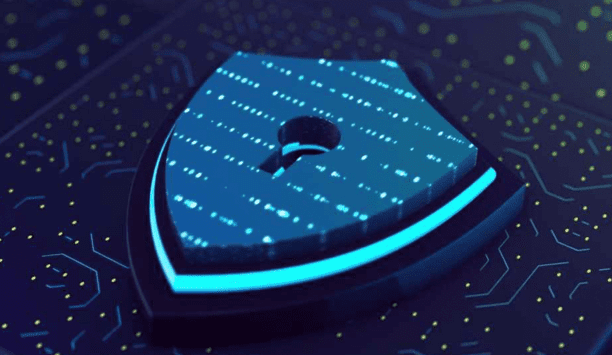
AI In Security Solution
Download
Unlocking Wide-Angle Camera Dewarping
Download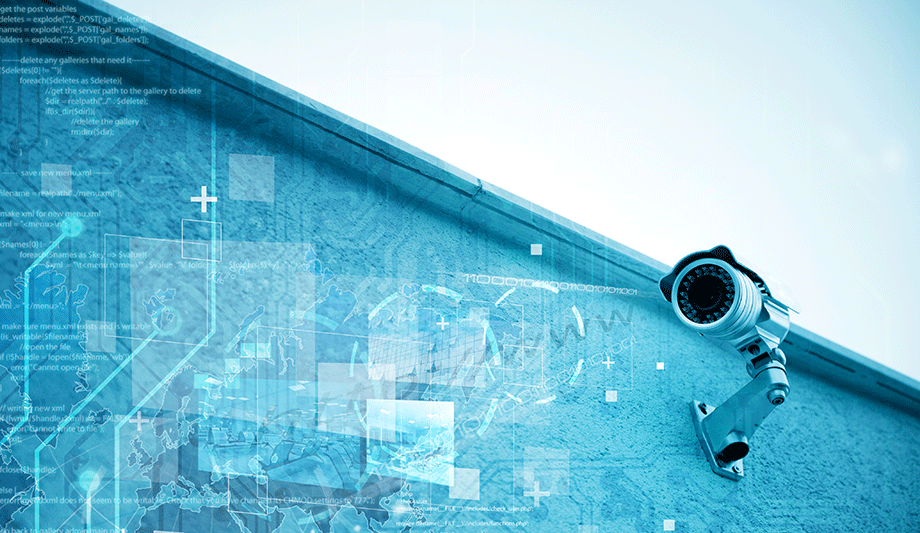
Empowering Cameras With AI
Download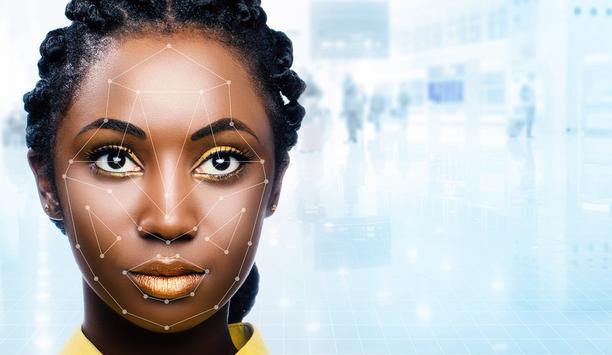
The Rise of Ethical Facial Recognition
Download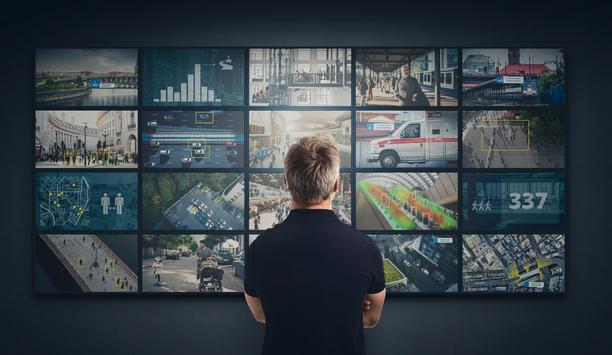
Connected Video Technology for Safe Cities
Download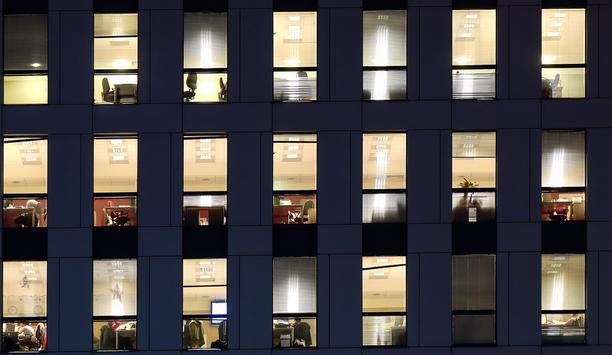
How Security Systems Ensure Healthy Workplaces During COVID and After
Download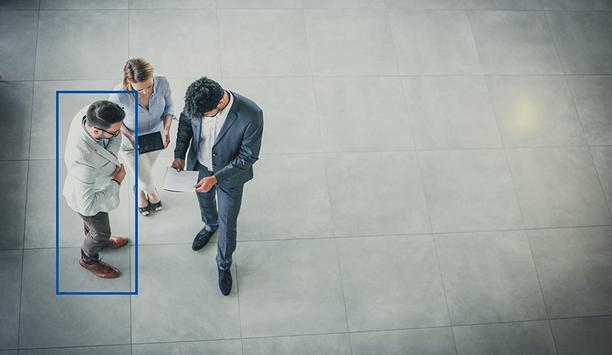
Artificial Intelligence: Understanding Its Place In Physical Security
Download


